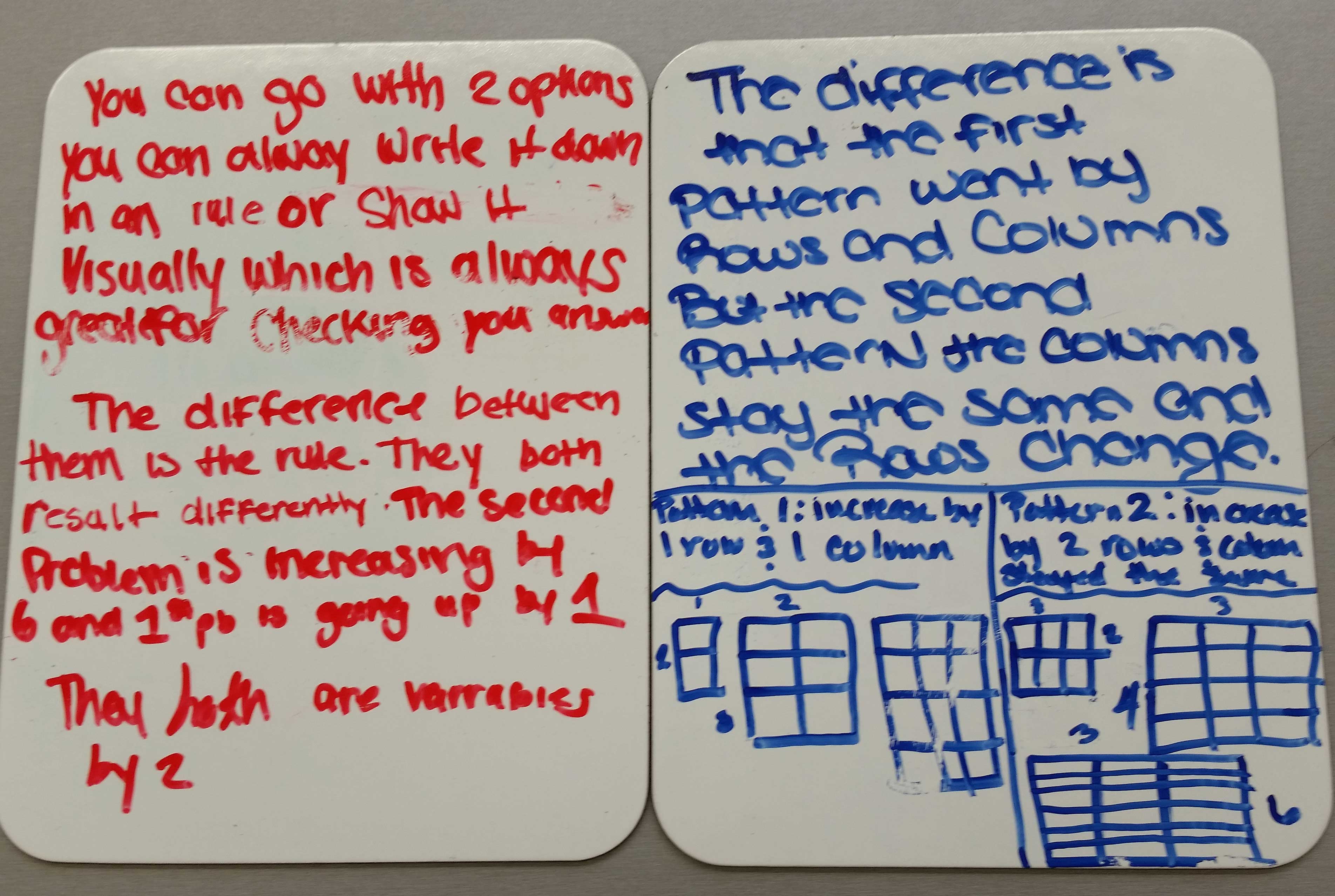This Tuesday was the first math class I was teaching all year. This means Monday night I was wringing out my twitter feed like wet dish rag, trying to squeeze out every drop of teaching ideas into my class the next day. The turnover and structure of our school means that every marking period gives teachers the first day of school ‘blank page’ feeling.
My first day of school for this quarter needed to have some routines to build number sense, promote discourse, and get the kids prepared for an exploration of quadratics that put procedural knowledge in the backseat. I settled on starting Tuesday with a counting circle for 10 minutes each class. Sadie’s post from a few years ago seemed to be within six-degrees of separation of any post you can find on counting circles, and it pretty much convinced me to start my first class with this routine. As the cycle goes on I may try to work in a Problem String or some other routine.The idea is to start class each day with everyone working together and talking, as opposed to my usual Do Now-Review.
I like to think of this class as a unit in quadratics that puts procedures on the back burner. To plant the seed for some discourse around the quadratics I asked to get in groups and have a little conversation about two different kinds of visual patterns and to talk in small groups about what similarities and differences they saw in the two patterns. The worksheet I used is below, and was a lightly modified version of one from last year.
The worksheet didn’t really help promote the group work the way I would have wanted, in part because the task could have been more group optimized, and I could have really pushed the kids to stick to the group roles I had prepared. But the biggest problem was that I had only 5 students who showed up to class. Low attendance is a regular occurrence at our school, but this was basically a tutoring session. I had the whole class sit around the same table and instead of using chart paper had each group just write on a mini-whiteboard and slide the result down to the group at the other end of the table.

The two groups worked differently, one visual, one comparing the differences, so it was good. I asked them to describe their work to each other. Then on their paper, paraphrase what they saw in the other approach and how it connects to their own work. It showed that I will need to work on helping students describe their thinking in order to let everyone be successful this cycle.
The last thing we did in the class was talk about functions, and for this I dusted off a tried and true function lesson. The thing that this assignment needs is to have more challenging problems for the students who are able to finish the work quickly. If I could have an “important stuff” section of future assignments, and then “tough stuff” or “fun stuff” sections and ask student just to work on whatever they think is worth their time I would probably be more successful. I would also be just that much closer to Bowen and Darryl, whose idea I would be stealing.
For a first class it was pretty good. I hope to keep posting here throughout the cycle. The next post will be a talk about what ended up happening when I had to miss the second class of the cycle because of a meeting I had to attend.


